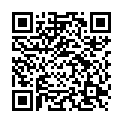|
|
|
| Module code: WIBAS-320 |
|
|
6V+1U+1PA (8 hours per week) |
|
10 |
| Semester: 3 |
| Mandatory course: yes |
Language of instruction:
German |
Assessment:
Exercises, project, written exam
[updated 30.07.2021]
|
WIBAS-320 (P450-0038) Industrial Engineering, Bachelor, ASPO 01.10.2007
, semester 3, mandatory course
|
120 class hours (= 90 clock hours) over a 15-week period.
The total student study time is 300 hours (equivalent to 10 ECTS credits).
There are therefore 210 hours available for class preparation and follow-up work and exam preparation.
|
Recommended prerequisites (modules):
None.
|
Recommended as prerequisite for:
WIBAS-450/550-M2e Machine tools
WIBAS-450/550-M2f
WIBAS-450/550-M6
[updated 21.03.2013]
|
Module coordinator:
Prof. Dr.-Ing. Dieter Arendes |
Lecturer: Prof. Dr.-Ing. Dieter Arendes
[updated 03.07.2009]
|
Learning outcomes:
Production technology:
After successfully completing this module, students will be familiar with the most important manufacturing processes of DIN 8580, in particular their technological features (e.g. operating principles, process parameters, tool systems) and areas of application (process limits, materials, economic efficiency).
Design Technology / CAD:
Students will be familiar with design methodology and technology, be able to read technical drawings and be familiar with the properties and applications of important machine elements as well as the calculation of specific machine elements.
They will be able to operate the basic features of a CAD system (AutoCAD) and use it for design work.
[updated 30.07.2021]
|
Module content:
Production technology:
1. Overview and classification
2. Primary forming production processes, in particular casting
3. Forming production processes sheet forming (bending, deep drawing, metal spinning,...) and bulk forming (extrusion, rolling, ...)
4. Separating processes:
5. Stamping, autogenous cutting, EDM (electrical discharge machining)
6. Machining with geometrically defined cutting edge (turning, milling, drilling) and undefined cutting edge (grinding)
7. Joining, soldering, pressure and fusion welding processes and bonding
Design Technology / CAD:
1. Introduction, design principles and methodology
2. Standards, tolerances and fits, surfaces
3. Reading technical drawings
4. Strength calculations on shafts and axles
5. Overview of properties, areas of application and calculation bases of selected machine elements: shaft-hub connections, screws, springs
6. Introduction to a CAD system (AutoCAD):
Basics of 2D and 3D design
[updated 30.07.2021]
|
Teaching methods/Media:
Production technology:
The following media will be used: Animations (FEM simulation), sample parts, script in the form of slides, as well as videos from teaching and industry.
Design Technology / CAD:
A CAD system will be used. Lecture notes will be available as a set of slides.
[updated 30.07.2021]
|
Recommended or required reading:
Production technology:
Koether, R./ Rau, W.: Fertigungstechnik für Wirtschaftsingenieure, Carl Hanser Verlag.
König, W./ Klocke F.: Fertigungsverfahren, mehrere Bände, VDI-Verlag GmbH, Düsseldorf.
Lange, K.: Lehrbuch der Umformtechnik, mehrere Bände, Springer Verlag.
Schuler Pressen GmbH: Handbuch der Umformtechnik, Springer Verlag 1996.
Spur, G./ Stöferle, Th.: Handbuch der Fertigungstechnik, mehrere Bände, Karl-Hanser-Verlag.
Design Technology / CAD:
Muhs, D./ Wittel, H./ Becker, M./ Jannasch, D./ Voßiek, J./ Roloff/ Matek: Maschinenelemente, Vieweg Verlag,2006.
Decker, K.-H-; Kabus, K.: Maschinenelemente, Hanser Fachbuchverlag, 2007.
[updated 30.07.2021]
|

